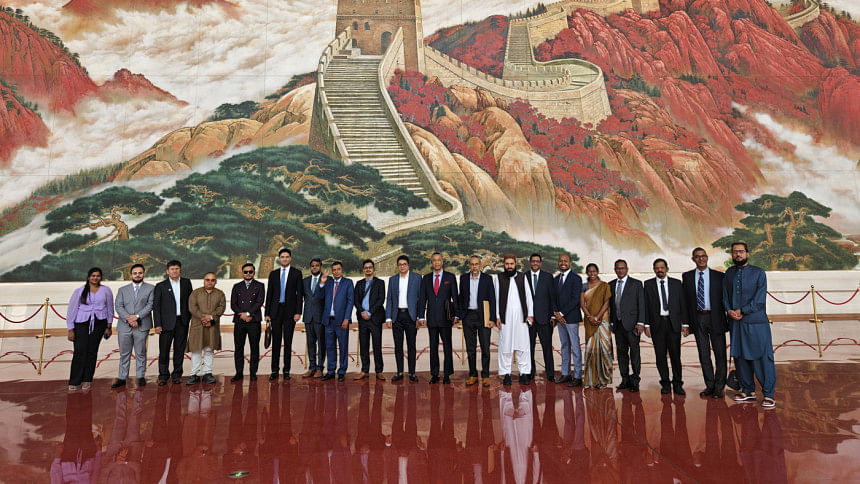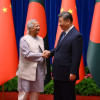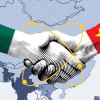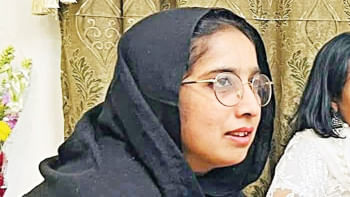What South Asia can learn from China’s development journey

On May 24, I had the pleasure of travelling to China to meet a delegation of over 20 members from across South Asia, as well as representatives of the Chinese Communist Party (CPC). The seven-day trip, during which CPC representatives held dialogues with political parties from South Asia, as well as members of academia, think tanks, and the media, proved to be a truly enlightening experience.
Our first stop was Beijing, and what was particularly noticeable from the outset was the warmth and graciousness of our hosts. The delegation from Bangladesh was greeted at the airport—and later at the hotel—by several CPC members, who also welcomed delegates from across South Asia and accompanied us throughout the entire visit.
Our stay in Beijing involved visits to various places in an effort to experience Chinese culture first-hand. It was evident that, for the Chinese, their culture forms the foundational pillar of their identity and aspirations.
During our time in the city, we also had the pleasure of attending a large-scale dialogue that included senior representatives from Southeast Asian and Central Asian countries. At that event, the enthusiasm of all stakeholders regarding the Chinese-led Belt and Road Initiative (BRI) was visible. It was also evident how much progress had been made in terms of connecting China with Southeast Asia, as well as in improving connectivity among the Southeast Asian countries themselves.
Unfortunately, perhaps due largely to intra-regional conflict, it was equally clear how far South Asia has fallen behind in this regard. Representatives from Central Asian countries spoke of how China's technological prowess has been harnessed to extract their significant natural resource reserves. Once again, it was clear that South Asian countries are lagging far behind in their ability to make effective use of their own resources.
A recurring theme throughout many of the dialogues was that much of this stagnation appears to stem from the quality of leadership that South Asia has experienced over the decades. China, on the other hand, according to our gracious hosts, has worked extensively to improve the calibre of its leadership and to address corruption. One interesting story that was shared with us involved a member of the CPC who was photographed smiling at an accident site. His apparent insensitivity during a tragedy raised concerns among the Chinese leadership, who also noticed that he had been photographed wearing new and expensive watches at various events—watches that were beyond his pay grade. This led to a deeper investigation, which ultimately found that the individual had been involved in corruption.
As the world navigates increasing chaos and uncertainty, perhaps we are better off working together. As I mentioned earlier, the Chinese people take great pride in their civilisation, which spans thousands of years. And they also believe that Asian civilisations, in general, share a common history of peace and a tradition of pursuing mutually beneficial, win-win cooperation. There has been much talk about the 21st century being the "Asian century," and during our visit to China, it became obvious that Asia, as a whole, possesses all the components needed for shared success.
There were more such stories shared with us. We were informed that in China, every government department has its own "discipline committee," which reports to a central authority. Not only are government officials expected to refrain from corruption in order to keep their positions, but they are also expected to demonstrate other good disciplinary habits, including humility and a willingness to serve the public.
Naturally, the practice of good discipline and the effort to establish an educated and merit-based society have contributed to the rapid pace of China's development. While in the West it is evident that most countries developed 50 to 100 years ago, China's development has occurred largely in the past 30 to 40 years.
At the same time—whether it is infrastructure, environmental protection, poverty eradication, or the extremely impressive technological strides they have made—China's development is remarkable by any metric. In the area of technology in particular, the progress China has made is astonishing. From the development of self-driving cars to robotics and the generation of renewable energy, the country has become one of the hotspots for global technological innovation.
Our next stop was Kunming City in Yunnan Province, which is among the most beautiful places I have ever visited. But beyond its natural beauty, the city has been transformed into a gateway for connectivity between China and many of its neighbours. Again, during the dialogues held there, it became obvious that—from train tracks to highways—China has rapidly connected with Southeast Asia through Yunnan Province. And despite massive potential, activity along that front with South Asia remains somewhat slow, if not stagnant.
However, speaking with other South Asian delegates, it also became clear that people across South Asia are increasingly realising how far they are being left behind in a world that is rapidly moving forward. And China is a perfect example. Its cooperation with Southeast Asian countries has led to win-win outcomes for all parties. Having witnessed the fruits of that cooperation, others are increasingly eager to join in.
This week-long trip was not only a wonderful experience of witnessing China's rapid development and impressive achievements, but it also gave us insight into how it has sustained its success—through dialogue, sharing, and getting to know and understand one another: where we agree, where we disagree; where we can work together, and where we are better off on our own.
For the most part, as the world navigates increasing chaos and uncertainty, perhaps we are better off working together. As I mentioned earlier, the Chinese people take great pride in their civilisation, which spans thousands of years. And they also believe that Asian civilisations, in general, share a common history of peace and a tradition of pursuing mutually beneficial, win-win cooperation.
There has been much talk about the 21st century being the "Asian century," and during our visit to China, it became obvious that Asia, as a whole, possesses all the components needed for shared success. The only questions that remain are: i) do we have the visionary leadership needed to imagine Asia at the forefront of shaping the global order?; and ii) can we set aside our petty emotions and egos, and finally work together for the common good?
Eresh Omar Jamal is head of the editorial team at The Daily Star. His X handle is @EreshOmarJamal.
Views expressed in this article are the author's own.
Follow The Daily Star Opinion on Facebook for the latest opinions, commentaries and analyses by experts and professionals. To contribute your article or letter to The Daily Star Opinion, see our guidelines for submission.

 For all latest news, follow The Daily Star's Google News channel.
For all latest news, follow The Daily Star's Google News channel. 








Comments